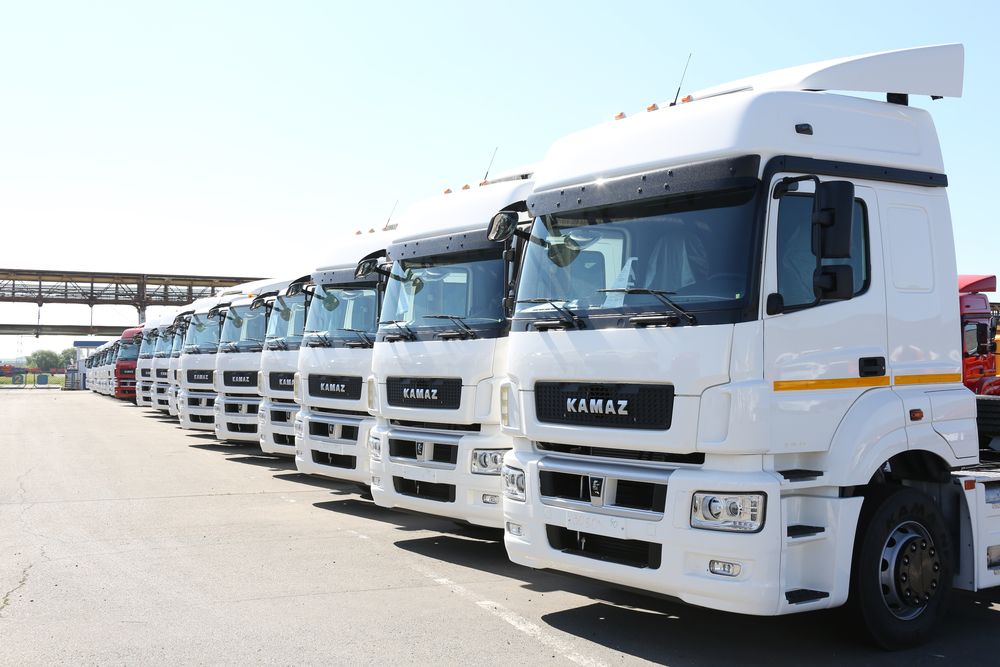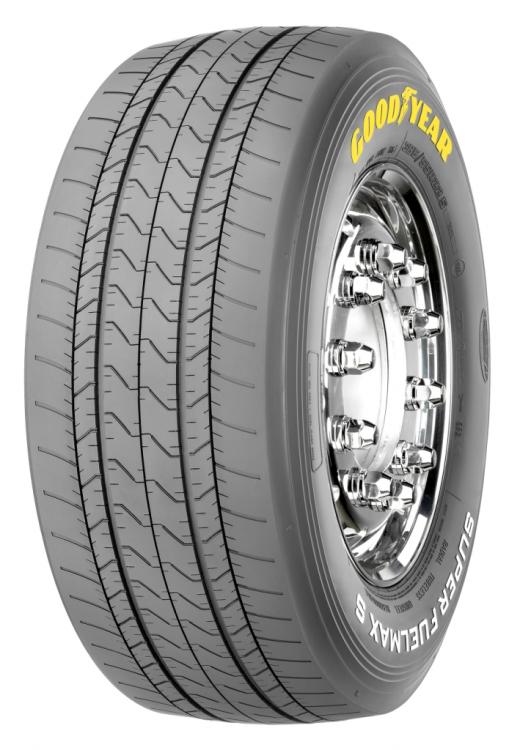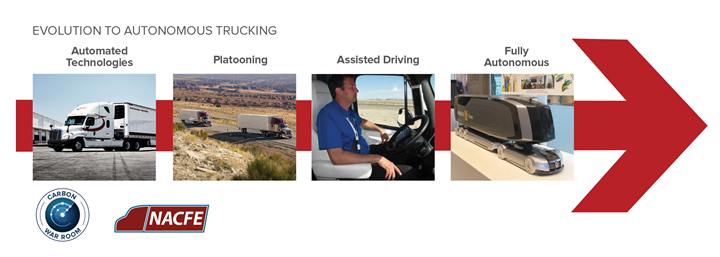
kscarbel2
Moderator-
Posts
17,893 -
Joined
-
Days Won
86
Content Type
Profiles
Forums
Gallery
Events
Blogs
BMT Wiki
Collections
Store
Everything posted by kscarbel2
-
Computer hacker’s demonstrate they can take control of vehicles
kscarbel2 replied to kscarbel2's topic in Trucking News
Hackers Infect Army of Cameras, DVRs for Massive Internet Attacks The Wall Street Journal / September 29, 2016 Attackers used an army of hijacked security cameras and video recorders to launch several massive internet attacks last week, prompting fresh concern about the vulnerability of millions of “smart” devicesin homes and businesses connected to the internet. The assaults raised eyebrows among security experts both for their size and for the machines that made them happen. The attackers used as many as one million Chinese-made security cameras, digital video recorders and other infected devices to generate webpage requests and data that knocked their targets offline, security experts said. Those affected include French web hosting provider OVH and U.S. security researcher Brian Krebs, whose website was disabled temporarily. “We need to address this as a clear and present threat not just to censorship but to critical infrastructure,” Mr. Krebs said. Closely held OVH confirmed the attack, but declined to comment further. “We’re thinking this is the tip of the iceberg,” said Dale Drew, head of security at Level 3 Communications Inc., which runs one of the world’s largest internet backbones, giving it a window into many of the attacks that cross the net. The proliferation of internet-connected devices from televisions to thermostats provide attackers a bigger arsenal of weapons to infiltrate. Many are intended to be plugged in and forgotten. These devices are “designed to be remote controlled over the internet,” said Andy Ellis, security chief at network operator Akamai Technologies Inc., some of whose clients were affected. “They’re also never going to be updated.” Experts have long warned that machines without their own screens are less likely to receive fixes designed to protect them. Researchers have found flaws in gadgets ranging from “smart” lightbulbs to internet-connected cars. Wi-Fi routers are a growing source of concern as many manufacturers put the onus on consumers to do the updating. Level 3 identified cameras and video recorders made by Chinese manufacturer Dahua Technology Co. as the sources of a large share of the recent attacks, but Level 3 said other devices are being roped into a new attack network currently being assembled. Hackers often hijack the machines through computers that are already infected or poorly protected Wi-Fi routers. A Dahua spokeswoman said on Thursday the company is still reviewing Level 3’s research. She cautioned that malware could succeed in attacking older devices that have outdated software. “We strongly recommend users to upgrade the firmware of devices” and set a strong password to reduce risks, she added. Dahua, which claims it is one of the world’s biggest makers of security cameras and digital recorders, sells directly to consumers and businesses through its website and retailers like Amazon.com Inc. It also lists 71 technology partners on its U.S. website, from startups like AngelCam to better known firms like Canon Inc. Many of Dahua’s cameras and recorders are used by small businesses for security systems. Level 3 said H.264 DVRs made by Dahua were especially prevalent, though security researchers said other brands were affected. In some cases the devices weren’t protected with passwords or had generic passwords, Mr. Drew said. “I suspect that a lot of people have been caught by surprise by how soon” the attacks happened, said Akamai’s Mr. Ellis. His company said it was blindsided by one of last week’s attacks. Mr. Ellis said traffic on Sept. 20 reached 700 gigabits a second—equivalent to 140,000 high-definition movies streaming at once—on his company’s network, twice the size of the previous biggest stream. Arbor Networks Inc., a security firm that defended several websites affiliated with the Rio Olympics against similar attacks this summer, found cable set-top boxes and home routers used to bombard the websites with data. Those attacks reached as much as 540 gigabits a second, Arbor said. “There are tens and tens of millions of these embedded devices out there,” said Roland Dobbins, Arbor’s principal engineer. “But they ship by default with very poor security.” Denial-of-service attacks—so-called because they flood websites with unwanted data crashing the sites and denying access to legitimate users—are nothing new. In prior iterations, hackers have exploited weaknesses in the operating systems of personal computers hijacking them to carry out these actions. Microsoft Corp. for decades has been playing a running game of Whac-A-Mole to patch each flaw in its Window’s operating system as it arises. “It’s going to be very difficult to convince consumers to patch their refrigerator,” said Matthew Prince, chief executive of security provider CloudFlare Inc. “Where the security is more likely to be placed is in the network.” -
Automotive News / September 29, 2016 Fiat Chrysler’s Ram brand introduced a high-powered, off-road concept version of the Ram Rebel, dubbed the Rebel TRX, Thursday at the State Fair of Texas. The concept pickup features a 575-hp, 6.2-liter, supercharged V-8 engine, making it the most powerful pickup FCA has ever built, the company said in a statement. Featuring an enhanced suspension and 37-inch tires, the Rebel TRX concept has 13 inches of suspension travel, up from the Rebel’s standard 9.25 inches. Jim Morrison, vice president of the Ram brand, said the Rebel TRX is just a concept at this point, but he left the door open to the possibility that it could find its way into the Ram lineup sometime in the future. “We have to judge the reaction to it,” Morrison said Thursday. “I’m not going to make any announcements today, but we always listen to our customers.” he added. Morrison noted that the supercharged 6.2-liter Hemi V-8 has more than 100 hp more than Ford’s V-6 powered Raptor. Morrison said the idea for the Rebel TRX came from brand chief Mike Manley, who challenged FCA designers and engineers to build an off-road truck that could drive at sustained speeds of more than 100 mph off-road. The Rebel TRX has unique features, including side exhaust pipes that empty at the rear of the frame-mounted side-steps. Morrison started the truck on the stage, and it emitted a loud and clearly illegal bark. The production version would have to be quieter. Ram also unveiled a new Texas-only trim for its half-ton Ram 1500 pickup Thursday at the annual state fair in the nation’s largest single pickup market. The 2017 Ram 1500 Lone Star Silver Edition, expected in dealerships later this year, adds even more chrome trim to the brand’s Lone Star edition, including chrome wheel-to-wheel side steps, wave mesh grille inserts, belt moldings and side mirrors. The $900 package also includes special badging and is available on crew cab models of various configurations. Photo gallery - http://www.autonews.com/apps/pbcs.dll/gallery?Site=CA&Date=20160929&Category=PHOTOS01&ArtNo=929009981&Ref=PH&Profile=1403 . . .
-
Navistar is very busy producing engines, in Huntsville, Alabama and Melrose Park, Illinois,
-
2017 GM/Isuzu L5P Duramax rated at 445 hp/910 lb-ft
kscarbel2 replied to kscarbel2's topic in Trucking News
GM packs more pickup into diesel V8 Automotive News / September 29, 2016 The heavy-duty versions of the 2017 Chevrolet Silverado and GMC Sierra pickups will be available early next year with a new version of the 6.6-liter Duramax V8 turbodiesel that is the most powerful engine General Motors has ever offered in its pickups. GM said today the new Duramax engine is rated at 445 horsepower and 910 pounds-feet of torque, up from 397 hp and 765 lbs.-ft. in the outgoing 2016 models. The new engine escalates a heavy-duty pickup arms race. In July, Ford announced a power increase for its 2017 Powerstroke diesel V8, raising output to 440 hp and 925 lbs.-ft. of torque. Ram, with an aging inline six-cylinder diesel engine supplied by Cummins, offers a version of its engine that makes 385 hp and 900 lbs.-ft. of torque. GM offered to journalists limited test drives of the new engine ahead of tomorrow’s opening of the State Fair of Texas here, which could draw between 2.5 million and 3 million attendees. GM will be displaying the 2017 Silverado HD with the new engine on its stand. Sandor Piszar, director of Chevrolet truck marketing, said GM bumped up the torque, not because it wants to outgun Ford or other competitors but to make the truck more useful and less stressful for customers who haul heavy loads. “We’re shooting for towing confidence,” he said. For highway passing, the new engine reduces acceleration time from 50 mph to 70 mph by 1.5 seconds when towing a 10,000-pound trailer. Without a trailer, it can reach 0 to 60 mph in 7.1 seconds. New engine Gary Arvan, Duramax chief engineer, said 90 percent of the engine is new. It keeps the current engine’s bore spacing -- the distance between the pistons -- and short stroke, which enables GM to retain the expensive production equipment used to build the Duramax engine in its Moraine, Ohio, plant. But nearly every other system, from the oil pan to the fuel injectors, has been re-engineered and “designed to produce more torque at lower rpm,” said Arvan. Arvan said the revamped Durmax engine has three unique features: • Remelted piston bowl rims: The center section of each aluminum piston is heated up again after casting. That changes the molecular structure of the aluminum, making it better able to withstand heat. • A venturi jet drain oil separator: It filters oil mist out of the blow-by gases and returns the oil to the sump. • Closed loop glow plug temperature control: It uses sensors to manage the glow plugs to provide instant starts in cold weather. Other changes to the Duramax include: • A new, stronger block, redesigned aluminum cylinder heads and a new crankshaft with improved bearing surfaces; • A new fuel system, with proprietary GM controls; and • An electronically controlled turbocharger mounted between the cylinders. The new engine will also have a visual signature: a hood scoop that feeds cool, dry air into the intake system, helping the engine produce more power under heavy loads. Only Duramax-equipped trucks will have the scoop. GM has sold more than 2 million vehicles with the Duramax V8 engine since introducing it in 2001 under a joint venture with Isuzu. Horsepower and torque have increased with each new iteration, growing from the original 300 hp and 520 lbs.ft. of torque. Arvan said the new version of the Duramax produces 35 percent less oxides of nitrogen, or NOx, and will only need minor emissions systems revisions in the coming years to stay ahead of toughening clean air standards. -
Cultural decay and declining standards of behavior in the United States ------------------------------------------------------------------------------------------------------------------------ Security footage taken outside a store on Winward Avenue in Venice Beach, California, on Sunday night showing a man punching a woman. .
-
More bus travel needed to reach climate target
kscarbel2 replied to kscarbel2's topic in Trucking News
I like to think so. There is a genuine effort at Scania to make a difference, and help create a sustainable tomorrow. -
KamAZ Trucks Press Release / September 28, 2016 Truckmaker KamAZ, increased its sales by more than a quarter, significantly increased its stake in the Russian truck market and operates at a profit in June. For the January thru August period, KamAZ sold 18,297 trucks, a 26 percent increase over the same period last year. Sales in Russia reached 15,479 units, a 37 percent rise over the same period last year. The truckmaker’s market share in Russia with 14-40 tonne trucks rose to 59 percent. In August, the company's net profit amounted to 1,177 million Rubles. At the end of eight month period, the company’s losses narrowed to 946 million Rubles. The company continues to follow the path of investment in reengineering the production and development of a new model series. Over the first eight months of 2016, 4.9 billion Rubles were invested on modernization and development of new technologies. .
-
Transport Engineer / September 29, 2016 Construction material supplier Ardula Group has expanded its fleet to 50 with four new Charlton SuperLite steel-bodied tippers, selected after positive performance from its first three SuperLites last year. “With a tipper, it’s really the body that does all the hard work,” says Ardula’s group managing director Ricky Hemmings. “On the one hand, we want a really good payload when moving easier, high density products such as sand and aggregates. On the other, we want real strength and durability if we are doing heavy site work. “We need one truck that can operate at both ends of the envelope and on everything in between. A premium chassis fitted with a strong, top quality lightweight steel body is therefore the only realistic solution. We had our first three SuperLites last year and have been delighted with them – hence these latest four.” The bodies are mounted on Scania chassis and powered by 450bhp engines, and two of the new additions have sleeper cabs to improve operational versatility. Each vehicle is fitted with Hyva’s latest FCA137 separate ram and tank cylinder which combines a light 450kg wet weight with heavy duty performance. They also feature electric sheeting and aluminium wheels, and boast a payload capacity of more than 19 tonnes. Charleton Bodies by Thompsons Group - http://thompsonsuk.com/products/charlton-bodies/ .
-
Goodyear A Grade Low Rolling Resistance Truck Tires at IAA
kscarbel2 posted a topic in Trucking News
Goodyear Press Release / September 28, 2016 Goodyear SUPER FUELMAX prototype truck tires were unveiled at the 2016 IAA commercial vehicle show in Hanover this September. The prototype steer and drive tires, which boast fuel saving A EU label grades, were fitted to one of the trucks on display at the DAF stand, which all stand out in highest fuel efficiency. The Goodyear prototype truck tires displayed are the SUPER FUELMAX S steer tire in size 385/55R22.5 and SUPER FUELMAX D drive tire in size 315/70R22.5, and are a further development of the very successful low rolling resistance Goodyear FUELMAX range. At the IAA, these tires will be mounted on a fuel efficiency optimized DAF XF 4x2 tractor unit. In addition to their outstanding rolling resistance with A EU tire label grades, the drive tire qualify for the 3 Peak Mountain and Snow Flake (3PMSF) winter tire certification. The super fuel efficient prototype tires demonstrate Goodyear’s commitment to developing innovative products that reduce Total Cost of Ownership for fleets thanks to low fuel consumption – a key cost factor for fleet operators. “The new Goodyear SUPER FUELMAX prototype tires illustrate our commitment to innovative transport solutions”, said Benjamin Willot, Director Marketing Commercial Tires at Goodyear Europe, Middle East and Africa. “The EU tire label covers just three performance criteria but before we bring any new product to market it must meet our stringent requirements covering 50 different performance criteria. The SUPER FUELMAX A grade rolling resistance tires demonstrate our commitment to develop advanced fuel saving truck tires for our customers with a balanced performance in the other important criteria.” Both the steer and the drive tires’ tread compounds feature a specifically developed new formulation based on silica. Thanks to a combination of material processing and curing, the silica blends with the polymer network in a way that further reduces rolling resistance while ensuring long tread life. The tread design of the SUPER FUELMAX S steer tire features the tried and trusted IntelliMax Groove Technology. This limits slip, especially when cornering, thanks to hidden raindrop grooves, which close when rolling through the footprint. The ribs support each other reducing their movement and stiffening the tread. The tread blocks of the SUPER FUELMAX D drive tire have been re-designed and the stiffness of the blocks has been improved. Combined with the low rolling resistance tread compound, the overall tire design results in a noticeably improved fuel efficiency compared to current FUELMAX D. Re-engineering has further decreased rolling resistance, while offering a balanced performance in other important criteria areas. IntelliMax Rib Technology has been introduced between the central and intermediate ribs to stiffen the tread for low rolling resistance, high mileage and regular wear, thanks to the inter-locking elements. Goodyear was the first tire manufacturer to bring a truck tire to market that met the A grade rolling resistance requirements of the EU Tire Label. This was the 385/55R22.5 LHT II trailer tire. Goodyear currently offers the Goodyear FUELMAX T in size 385/55R22.5 and 435/50R19.5, which is an A grade fuel efficient truck trailer tire. Together with the SUPER FUELMAX steer and drive prototype tires, Goodyear customers could benefit from a combination of A grade EU tire label tires in rolling resistance on steer, drive and trailer positions. . -
More bus travel needed to reach climate target
kscarbel2 replied to kscarbel2's topic in Trucking News
-
Scania Group Press Release / September 23, 2016 Time is running out and immediate action is required to fulfil the Paris climate target of no more than a two-degree global warming. At IAA, Scania outlined three cornerstones that are crucial for achieving sustainable transport: Smarter transport to make public transport an attractive alternative to passenger car travel through, for example, rapid bus systems, Energy savings by a host of measures, including electrification, Replacement of fossil energy with renewable energy with the increased use of alternative fuels. Scania’s three buses on display at IAA all contribute to this end. Jonas Kempe and Anna Carmo e Silva, Scania Buses and Coaches, outline how these buses contribute to the shift towards more sustainable transport. .
-
Grandmother murders 3-year-old grandson Associated Press / September 28, 2016 A Delaware woman has been arrested and charged with suffocating her three-year-old grandson, whose decomposing body was discovered in bed inside her trailer home. State police say paramedics responded to a home in Felton at around 8.40am Tuesday after Angela Bingham, 51, called 911 saying she wanted to harm herself and that she had killed her grandson, Rilan Everett. Paramedics and state troopers then entered the woman’s residence and found the toddlers body body decomposing in his bed. He had been dead for more than a week. Bingham has been charged with first-degree murder. Bingham confessed to suffocating her grandson with a washcloth on September 18 as the boy lay awake in bed after telling him 'it was time to go.' Bingham told police that Rilan had been living with her because her daughter left to be with her boyfriend. A neighbor described the toddler as extremely bright and very devoted to his grandmother. A search of the residence yielded a calendar in the kitchen that had an entry on September 18 that read: 'Dead, I love you.' Angela Bingham remained jailed Wednesday on $1,000,000 cash bail. .
-
When you visited your local Mack Australia dealer, were they unable or unwilling to help you ? The wiring info I have is limited to US market CH models. It would be different from a CHR.
-
. Police Deputy Derrick Stafford: “I never saw a kid, bro” Associated Press / September 28, 2016 Police have released a graphic video that captured the moment two officers fired on a car and killed a six-year-old boy in Louisiana last year. Prosecutors showed the tape in court on Wednesday to support their claim that one of the deputies, Derrick Stafford, had a pattern of using excessive force — including last November's fatal shooting of Jeremy Mardis in Marksville. The head of the Louisiana State Police said the video was the most disturbing thing he's ever seen. Nearly a year later, the public is getting its first look at the graphic footage. The state judge presiding over the murder cases against the two deputies allowed reporters to make copies of the tape on Wednesday after a hearing where it was formally introduced as evidence. Prosecutors and defense attorneys previously described in writing how the footage depicts the shooting, which stops less than a minute into the video. The rest of the nearly 14 minutes of footage shows the aftermath, as the officer with the body camera checks on the lifeless body of Mardis while his critically wounded father, Christopher Few, lies bleeding on the pavement. Matthew Derbes, a prosecutor from Attorney General Jeff Landry's office, said Stafford's pattern of hurting people he's arresting also provides a motive for shooting at Few while his hands are raised. 'Motive is something the jury wants to hear,' Derbes said. 'Why would they do this?' But defense attorneys for Stafford and Norris Greenhouse Jr. argue the deputies acted in self-defense. They claim Few drove recklessly while leading officers on a two-mile chase and then rammed into Greenhouse's vehicle as he was exiting it, before he and Stafford opened fire. While the video doesn't capture the entire pursuit, state District Court Judge William Bennett noted that the footage doesn't show Few's car posing a threat to the officers as they fired. 'That car was not being used as a deadly weapon at that time,' Bennett said. 'I daresay it was not even close to being used as a deadly weapon at that time.' Prosecutors say the video shows the deputies firing from a safe distance from Few's car. The video from the body camera worn by Marksville Police Sgt. Kenneth Parnell III lacks audio for the first 27 seconds. The deputies began shooting before the audio begins. After the shooting and sirens stop, somebody yells at Few to show his hands. Few was slumped over the blood-stained door on the driver's side of his car when officers approach him. 'Is he hit at all?' Stafford later asked Parnell. 'Who?' Parnell replied. 'The driver,' Stafford said 'Yeah,' Parnell responded. 'I never saw a kid in the car, man,' Stafford said. 'I never saw a kid, bro.' About seven minutes after the shooting, Parnell opened the passenger door to Few's car, shone a flashlight onto Mardis, nudged his right shoulder and checked for a pulse. Then he walked over to another officer and said he found a faint pulse on the boy. Donning surgical gloves, Parnell walked back to the boy's side of the car and shone a light on the boy again. 'Oh, my God,' he muttered. Several minutes later, a paramedic told Parnell that first-grader Jeremy Mardis was dead. He was hit by five bullets in the head and chest. Defense attorneys have suggested investigators rushed to judgment. George Higgins, one of Greenhouse's attorneys, said investigators have no evidence that any of the bullets fired by Greenhouse struck Few or his son. Higgins asked State Police detective Rodney Owens during Wednesday's hearing why the deputies were arrested before obtaining results of ballistics tests. 'You didn't know that Mr. Greenhouse did not shoot anybody when you arrested him?' Higgins said. Owens acknowledged that he didn't. But investigators later traced 14 shell casings to Stafford's semi-automatic handgun and determined four other shell casings recovered at the scene came from Greenhouse's gun. Of the four bullet fragments recovered from the boy's body, three matched Stafford's weapon and another couldn't be matched to either deputy. Owens also testified that there isn't any physical evidence that Few's car collided with Greenhouse's vehicle, but he couldn't rule that out as a possibility. Stafford and Greenhouse await separate trials on second-degree murder and attempted second-degree murder charges. Stafford, a Marksville police lieutenant, and Greenhouse, a former Marksville police officer, were moonlighting as deputy marshals on the night of the November 3, 2015, shooting. Stafford's trial is scheduled to start November 28; Greenhouse has a March 13, 2017, trial date. .
-
Two-truck platooning could deliver 4% average fuel savings
kscarbel2 replied to kscarbel2's topic in Trucking News
Relax, it's working extremely well in practice. Have a look at these videos. http://www.bigmacktrucks.com/topic/44535-6-truck-makers-to-participate-in-european-platooning-challenge/#comment-328766 -
Detroit Press Release / September 28, 2016 Detroit Intelligent Powertrain Management (IPM4) pinpoints the truck's location and looks over a mile ahead to anticipate terrain. .
-
International Trucks Press Release / September 28, 2016 .
-
Walking IAA 2016, the world's largest truck show
kscarbel2 replied to kscarbel2's topic in Trucking News
ZF is a global leader. There Traxon transmission "system" has all the bases covered with the latest technology in the industry. Eaton, like Cummins, has lagged behind the European makers. I honestly don't know why they've been so complacent. At one time global leaders, they are now followers. -
Two-truck platooning could deliver 4% average fuel savings
kscarbel2 replied to kscarbel2's topic in Trucking News
NACFE Report: Truck Platooning Could Save 4% in Fuel Heavy Duty Trucking / September 28, 2016 Platooning – the electronic linking of trucks where a lead vehicle largely controls the one following -- would save about 4% in fuel compared to a pair of rigs running separately, says the latest “confidence” report from the North American Council on Freight Efficiency. The money thus saved will pay back an investment for necessary equipment in one to two years, say estimates in “Two-Truck Platooning,” released Wednesday by NACFE. "Two-truck platooning is showing real promise as a fuel-saving technology, even when considering the actual performance in real-world use,” said Mike Roeth, the organization’s executive director, in a statement. Fuel savings come from reduced air turbulence between the two tractor-trailers when they operate 40 to 50 feet apart, Roeth said. Reducing that distance should save more fuel, but would introduce operating complications, like reduced air flow to the second truck’s radiator. Testing shows that reduction in fuel use is 7% as the vehicles move at highway speeds, he explained. But probably one-quarter of the time they would not be operating as a platoon as they split up to pick up and deliver freight, stop for driver rest breaks, etc., during a trip. Taking out those times yields the 4% figure. Payback estimates outlined in three scenarios set equipment costs at $1,050 and $2,800, with the higher figure including more equipment than the lower dollar amount. Installation cost of $200 was also factored in. Equipment includes collision avoidance systems, adaptive cruise control, and in-cab cameras – all now available on the market, Roeth said. Vehicle-to-vehicle radios, the key element, are not yet available but should be soon as testing and perfecting progress. Two scenarios assume a tractor would platoon three-quarters of its running time, and a third scenario assumes it would do so half the time. Fuel was pegged at $3 per gallon, which it might be by the time platooning comes into common use. Two trucks now comprise a platoon in most testing here and in Europe, said Roeth and two researchers: Jack Roberts, a freelance truck writer and HDT contributing editor, and Rick Mihelic, an industry consultant and former engineer at Peterbilt Motors. More than two trucks could platoon, explained Roberts, with the number limited by the range of the radio signal that links the vehicles. “Daimler,” which is testing in Germany, “puts that at 200 meters,” he said. “That brings it to 10 trucks.” Education campaigns will be needed to alert the public to platooning and what trucks engaged in it will look and act like, Roberts said. Law enforcement officers, too, need to be informed because even the 40- to 50-foot interval is close by currently held safety standards, Roeth added. Stopping distances are not a problem because the brakes of the following vehicle would apply so quickly, in 1 millisecond after the lead driver applies them, Mahalik said. Meanwhile, protocols for which vehicle leads and which follows need to be worked out. Two-Truck Platooning is NACFE’s 14th project, Roeth said, and it was conducted using a standard method. “We used our common approach as we’ve done in previous confidence reports,” he said – a search for publically available information on the topic, then interviews with suppliers, manufacturers and fleets. “But rather than sharing experiences, which they don’t have because the technology is not yet in use, they are making predictions.” The amount of automated control of a platoon’s second and subsequent trucks will likely increase from the current throttle and braking to steering and lane-keeping, Roeth predicted. “The technology will evolve” as it’s shown to be workable. However, “Platooning is not autonomous trucking, and it is being improperly grouped with that,” he said. “Platooning still requires a driver in the second truck.” Platooning is not exactly around the corner, but it will begin sooner or later, said those consulted in the study. “I’m thinking 2018 to 2030 before we see platooning operations on the road," said an anonymous manager for a major truckload fleet quoted in the report. "There are still way too many studies that have to be done on this subject.” An executive summary of the report is here. The full report is here. . -
Two-truck platooning could deliver 4% average fuel savings
kscarbel2 posted a topic in Trucking News
Fleet Owner / September 28, 2016 Report predicts the front truck in a platoon can save 4% on fuel and the following truck can save 10%. Platooning could potentially deliver a 4% average savings over two trucks in real-world operating conditions, according to Trucking Efficiency’s most recent Confidence Report. That is after accounting for traffic, terrain and time when equipped trucks will not be operating in a platoon, explained Michael Roeth, executive director of the North American Council for Freight Efficiency (NACFE). Trucking Efficiency, a joint effort between NACFE and the Carbon War Room, released its report on two-truck platooning Sept. 28. According to the report, at a 40- to 50-ft. following distance, the front truck in a platoon can save 4% on fuel and the following truck can save 10%, giving an average of 7% (versus the two trucks not platooning). NACFE also added that platooning would accelerate the adoption of safety equipment, such as collision mitigation and adaptive cruise control, since trucks’ safety systems work together at significantly reduced following distances to overcome aerodynamic drag. “What we wanted to do here is understand the early stages of a path toward automation trucking,” Roeth said. “We see platooning as being the next audible automation, followed by other technologies for assisted driving, and then, finally, autonomous trucks.” Roeth explained that platooning is not fully autonomous/driverless trucking, noting that it is being improperly grouped with that concept. “We see this as an evolution, not a revolution, in trucking,” he added. “What we see is the braking and accelerating through V2V communications [creates] a reduced drag for both trucks, and the 40- to 50-ft. difference is what we see as a sweet spot.” Some of the hurdles and unknowns surrounding platooning include payback, driver acceptance, integrity, system security, legislative efforts and public awareness, and shared fuel savings, according to the report. “The standards aren’t very well defined,” explained Rick Mihelic, NACFE's program director, who also worked on the report. “We’re just going to have to see where it goes over the next few years.” The group’s study team developed two tools to help fleets make decisions about two-truck platooning: The Payback Calculator, which uses upfront cost of the equipment, any subscription costs for platooning, the savings in fuel, etc. to calculate the payback of two-truck platooning. “It’s clearly way too early to understand the cost benefits of platooning and the paybacks that exist,” Roeth explained. “We don’t expect this to be accurate, but directional.” The Confidence Matrix plots where the two-truck platooning choice falls in terms of available data on the technology and how quickly fleets should realize payback. Trucking journalist Jack Roberts, who also worked on the report, noted that there is a great deal of concern on the fleet side regarding the safety aspects of platooning. However, he said the safety benefit lies within the automation equipment and improved response time of brake application. “It takes lag that a human would have in recognizing a situation and properly responding to it and does it automatically,” Roberts explained. “It reduces the time the brakes have to react; that’s really where the safety part of this comes in.” Roberts mentioned that the industry and government must release public safety awareness campaigns, particularly to address concerns of cars cutting into platooning trucks. “This will be different today, a year from now and five years from now,” Roeth said. “NACFE hopes to do some work on the different phases of this. This is a basic understand and sharing of what we learned.” . -
Mahle is a cutting edge piston supplier. With cooling in mind, Mahle also acquired Behr in 2013, and Delphi's thermal management unit in 2015.
-
Heavy Duty Trucking / September 28, 2016 Mahle is working on a camshaft technology that will replace conventional bearings with wear-free roller bearings, the company announced at the IAA Commercial Vehicle Show in Hannover, Germany. Because the roller bearings do not rely on pressurized oil, the burden on the oil circuit is reduced and complex oil channels to the bearing points are no longer required. The associated simplification of the cylinder head design will, in turn, open up new opportunities, such as stop-start applications in commercial vehicles, according to Mahle. The combination of improved engine components, less friction, and reduced oil requirements based on actual demand can lead to lower fuel consumption and consequently reduced CO2 emissions. For heavy-duty commercial vehicles, Mahle can says it can achieve a reduction of around 3% thanks to optimized oil management and innovative engine components. Another innovation Mahle introduced at IAA is a map-controlled thermostat for commercial vehicles. These thermostats have already been successfully introduced as a series production application in passenger cars. They are designed to react fast and operate even at low temperatures. As a result, the thermostats are flexible in any driving situation and can optimally condition the coolant. In systemic interaction with the controlled E-Visco coolant pump and the E-Visco fan, the map-controlled thermostat can reduce fuel consumption and therefore CO2 emissions by 2%, according to Mahle.
-
International Truck First OEM to Make Collision Mitigation Standard
kscarbel2 replied to kscarbel2's topic in Trucking News
International Makes Collision Mitigation Standard on LT Series Trucks Heavy Duty Trucking / September 23, 2016 International Truck has announced that its upcoming LT Series on-highway Class 8 tractor will come standard with an advanced driver assistance safety system that includes collision mitigation and stability technologies. Bendix Wingman Advanced is the standard solution offered on the LT Series, giving drivers following distance and stationary object alerts, adaptive cruise control, collision mitigation braking and Bendix ESP stability technology. The system can help drivers avoid collisions, roll-overs and loss-of-control situations. For fleets, the system can also provide data to help keep owners and operators aware of what is happening on the road. "As part of our DriverFirst philosophy, driver safety is paramount when operating a truck and we're proud to lead the way by integrating a standard solution on the new LT Series, which demonstrates our commitment to drivers, their safety, and their livelihood,” said Bill Kozek, president, truck and parts at Navistar. "We continue to integrate industry-leading safety technologies on our vehicles and we're pleased to be the first OEM to make this level of driver assistance system standard on our newest on-highway tractor.”
BigMackTrucks.com
BigMackTrucks.com is a support forum for antique, classic and modern Mack Trucks! The forum is owned and maintained by Watt's Truck Center, Inc. an independent, full service Mack dealer. The forums are not affiliated with Mack Trucks, Inc.
Our Vendors and Advertisers
Thank you for your support!










